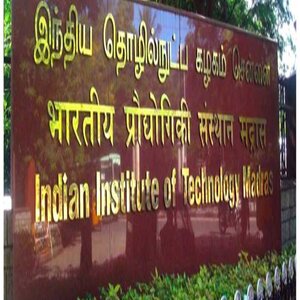IIT Madras Researchers Are Studying the High Transmission Potential of Coronavirus
 IIT Madras researchers are studying the high transmission rate and mortality of SARS-CoV-2, the scientific name for the coronavirus that causes Covid-19. Using computational tools, the team studied its two close variants -- SARS-CoV and NL63.
IIT Madras researchers are studying the high transmission rate and mortality of SARS-CoV-2, the scientific name for the coronavirus that causes Covid-19. Using computational tools, the team studied its two close variants -- SARS-CoV and NL63.
The team set out to understand how the spike proteins (which enables the coronavirus to penetrate human cells and cause Covid-19) of these different virus strains are interacting with the ACE2 receptors of human cells and how this interaction is affecting their transmission potential and severity of the disease
‘SARS-CoV’ can be considered a ‘sibling’ of the subfamily beta coronavirus ‘SARS-CoV-2.’ The ‘NL63’ belongs to sub-family alpha coronavirus can be considered as a ‘cousin’ of SARS-CoV-2. SARS-CoV is more severe than SARS-CoV-2 whereas NL63 shows milder symptoms than SARS-CoV and SARS-CoV-2.
The scientists set out to find the reason behind the mildness and severity of disease caused by these viruses. From the previous studies, it was realized that all three viruses gain entry to the human cell via ACE2 receptors which are present on human cells.
The research findings of this study have been published in the reputed peer-reviewed international journal Proteins: Structure, Function, Bioinformatics.
About the IIT Madras Research Team
The research team was led by Prof. M Michael Gromiha, Department of Biotechnology, Bhupat and Jyoti Mehta School of Biosciences, IIT Madras, Dr. Puneet Rawat and Dr. Sherlyn Jemimah, Research Scholars from IIT Madras. The team collaborated with Prof. PK Ponnuswamy, Former Vice-Chancellor, University of Madras, and Madurai Kamaraj University and Professor, Department of Physics, Bharathidasan University in Tiruchi, Tamil Nadu, for this study.
What Was the Purpose of The Study?
Elaborating on the objectives of the study, Prof. M Michael Gromiha, Department of Biotechnology, Bhupat and Jyoti Mehta School of Biosciences, IIT Madras, said, “Coronaviruses are not new to humans. Coronavirus such as NL63 causes only mild symptoms.”
“There exist some common functional aspects among NL63 and viruses such as SARS-CoV and SARS-CoV-2, both of which are relatively severe,” he added.
He mentioned that this brought up several questions, like:
i) Have these viruses evolved from the same ancestor?
ii) Why do they cause different mortality rates?
iii) What is the extent of similarity/difference(s) among these viruses?
iv) If we have immunity for mild NL63, then is it possible that we may have some degree of immunity towards the wild ones, SARS-CoV or SARS-CoV-2?
“Our effort is to find answers to these questions to an extent possible by studying the interaction mechanism of these viruses with the organs of the human body,” the professor said.
What Did the IIT Madras Research Team Find?
Using various computational tools, the team found that the interaction area between spike protein and ACE2, surrounding hydrophobicity and interaction energy play a key role in deciding the severity and transmission potential of coronaviruses.
The team also found that the distant cousin NL63 has unique ACE2 binding sites compared to SARS-CoV and SARS-CoV-2.
However, some of the binding site regions are conserved and any change in these regions is evolutionarily prohibited.
Further, they found that less interaction area, surrounding hydrophobicity and interaction energy for the interface residues are the main reasons for the mild severity of NL63 coronavirus.
Earlier Outbreaks of The Same Virus Family
There had been previous outbreaks as well. In 2002, one of its members SARS-CoV played havoc and in the year 2012, MERS-another member of the same family also spread widely.
Now, SARS-CoV-2 has spread around the world causing Covid-19 and, like SARS-CoV and MERS, the SARS-CoV-2 also spreads through sneezing, coughing and via respiratory droplets but its transmission potential turned out to be high.
In future, the researchers are all set to conduct a deeper analysis of the binding regions to know which kind of minimal mutations severely affect the binding of viruses S-proteins and ACE2 protein through experimental studies.
Such a study, the researchers said, will help find ways to reduce the gravity of the severe disease-causing coronaviruses and develop effective therapeutic interventions, which can be used across ACE2 binding coronavirus strains and potentially other viruses that may target ACE2 for infection.
The team is also working on repurposing the known drugs, which target the identified conserved regions on the viral S-protein and can help in treating coronavirus infections.

